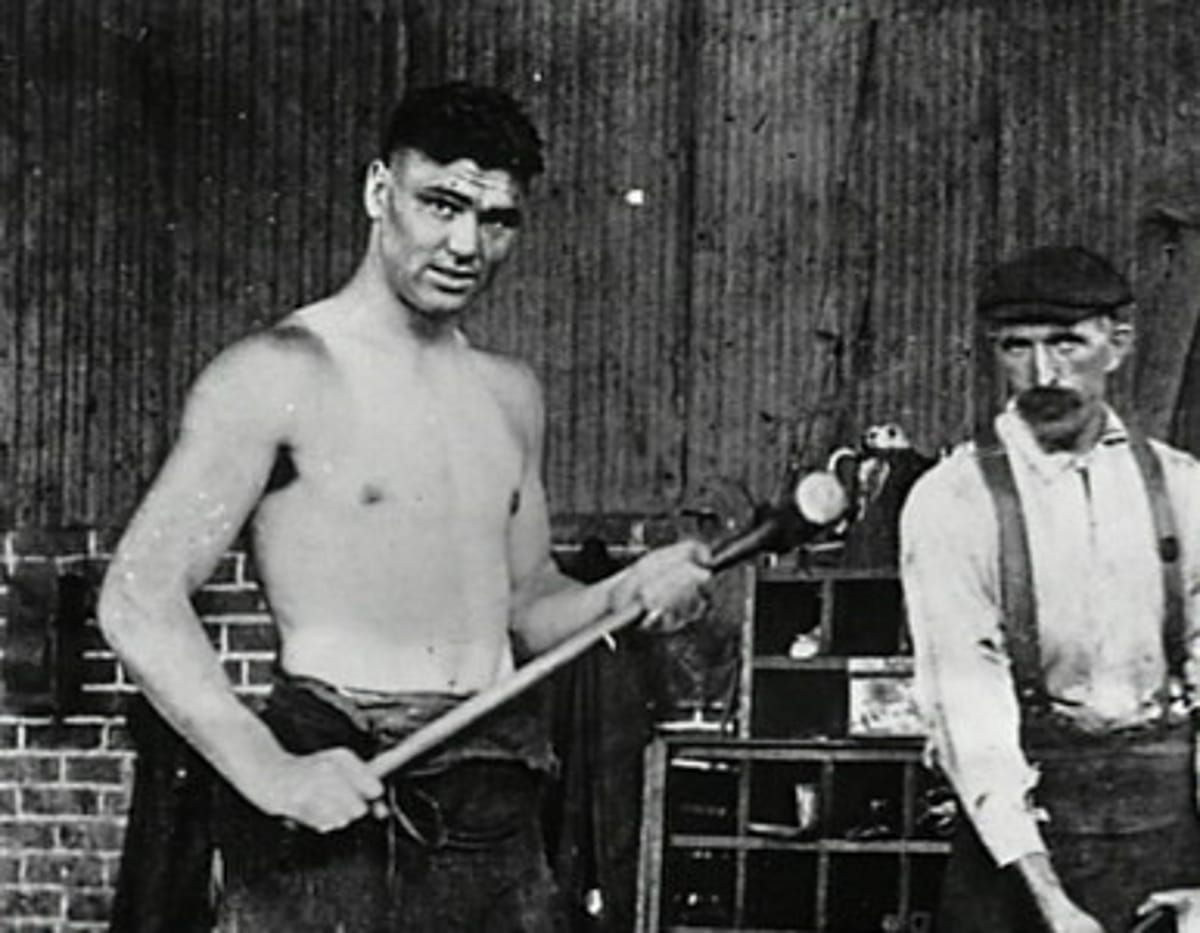By Ken Hissner: Let’s take a look at some of the biggest upsets and controversial endings in the heavyweight division.
In April of 1915, heavyweight champion Jack “Galveston Giant” Johnson, 53-5-11, was knocked out by Jess “Pottawatomie Giant” Willard, 22-5-2, in 26 rounds in Havana, Cuba. As Johnson lay on the canvas, he put his arms in front of his eyes to block the sunshine! Was it an upset or a fixed fight?
In September 1923, World champion Jack “Manassa Mauler” Dempsey, 56-4-9, knocked down Luis “El Toro Salvage de las Pampas” Firpo, 25-2, of Bueno Aires, Argentina, down seven times in the first round when Firpo knocked Dempsey through the ropes before the round was over. The press pushed Dempsey back into the ring, saving him from a knockout. In the second round, Dempsey knocked out Firpo at 0:57 of the round saving his title.
In September of 1927, Dempsey, in a rematch after losing his title, a new rule was issued that when you knock down an opponent, you go to a neutral corner. After dropping Gene “The Fighting Marine” Tunney, 78-1-3, down in the seventh round and stood over him instead of going to a neutral corner that referee Dave Barry ordered him to, he continued standing over Tunney. By the time he finally went to a neutral corner, fourteen seconds went by calling it “The Long Count Fight” that Tunney won by a ten round decision.
In June of 1936, future world champion Joe “The Brown Bomber” Louis, 24-0, was knocked down in the fourth round and knocked out in the twelfth round by Germany’s former world champion Max “Black Uhlan of the Rhine” Schmeling, 48-7-4, at Yankee Stadium, New York.
In December of 1947, Louis won a disputed split decision in a title defense against future world champion “Jersey” Joe Walcott, 42-13-1, after coming off the canvas in the first and fourth rounds. Six months later, Louis knocked out Walcott in eleven rounds and retired the following March for several years.
In September of 1952, Walcott, 49-18-1, defended his title against Rocky Marciano, 43-0, and after twelve rounds, was ahead 7-4, 8-4, and 7-5 in rounds when Marciano knocked him out in the thirteenth round with a crushing blow. After the fight, a stablemate of Marciano’s Hank Cisco went to the dressing room of Walcott’s and heard the ring physician say, “This man should never fight again. He has a bone crushed under his eye, and a hard blow will knock him out.” The mob controlled Walcott, it was rumored and put him into a rematch, and he was knocked out in the first round.
In March of 1950, Marciano 25-0, had been given a split decision over Roland LaStarza, 37-0, when it was announced scores of 5-5, 4-5, and 5-4 at Madison Square Garden, New York. Under New York’s supplemental scoring system that referee Jack Watson’s 5-5 was changed to 9-6, giving Marciano the victory. It would not be until Marciano was world champion in September of 1953 when LaStarza, 55-3, was knocked out by Marciano, 44-0, in the eleventh round at the Polo Grounds, New York.
In June of 1959, world champion Floyd Patterson, 35-1, was stopped by Sweden’s Ingemar “Ingo” Johansson, 21-0, in the third round at Yankee Stadium, New York. Patterson would win the title back, stopping Johansson in the rematch in June of 1960.
In February of 1964, world champion Sonny Liston, 35-1, was stopped by Cassius Clay, 19-0, in six rounds in the Convention Center in Miami Beach, Florida. Clay announced after the fight he was a Muslim taking the name Muhammad Ali. One rumor was the mob had control of Liston and put a baseball bat to his powerful left arm where his powerful jab had knocked out the teeth of one of his opponents previously by a jab.
In May of 1965, in the rematch, Ali delivered the “phantom punch” while backing up, knocking out Liston in their rematch at 2:12 of the first round. Referee “Jersey” Joe Walcott took some time counting out Liston, who was rolling around on the canvas, at the Central Maine Civic Center in Lewiston, Maine. It was obvious to most Liston took a “dive.”
In March of 1973, former champion Muhammad Ali, 41-1, suffered a broken jaw losing a split decision to Ken Norton, 29-1, at the Sports Arena, San Diego, California. He would go on to defeat Norton twice after that.
In October 1974, Muhammad Ali stopped world champion “Big” George Foreman, 40-0, in eight rounds to regain the world title in Zaire, Africa. Ali was ahead on all scorecards after seven rounds and introduced his rope-a-dope defense, allowing Foreman to punch himself out for the most part beating on the arms of Ali until almost exhaustion.
In February of 1978, Muhammad Ali, 55-2, lost his world title to 1976 Olympic Gold Medalist Leon Spinks, 6-0-1, by split decision at Hilton Hotel, Las Vegas, Nevada. Ali won the rematch in September by decision at the Superdome, in New Orleans, Louisiana gaining the world title for a record third time.
In February of 1990, “Iron” Mike Tyson, 37-0, was knocked out by James “Buster” Douglas, 28-4-1, in ten rounds at Tokyo Dome, Tokyo, Japan.
In November of 1996, once again, the world champion Tyson, 45-1, was stopped by 1984 Olympic Gold Medalist, former Cruiser and Heavyweight champion Evander “The Real Deal” Holyfield, 32-3, at MGM Grand, Las Vegas, Nevada. In the rematch, Tyson was cut due to what he claimed later was a headbutt and would go on to bite the ear of Holyfield, and after a brief break, the referee Mills Layne discussed it with the commissioner who allowed the fight to continue when Tyson bit off a piece of Holyfield’s ear to finally be disqualified.

